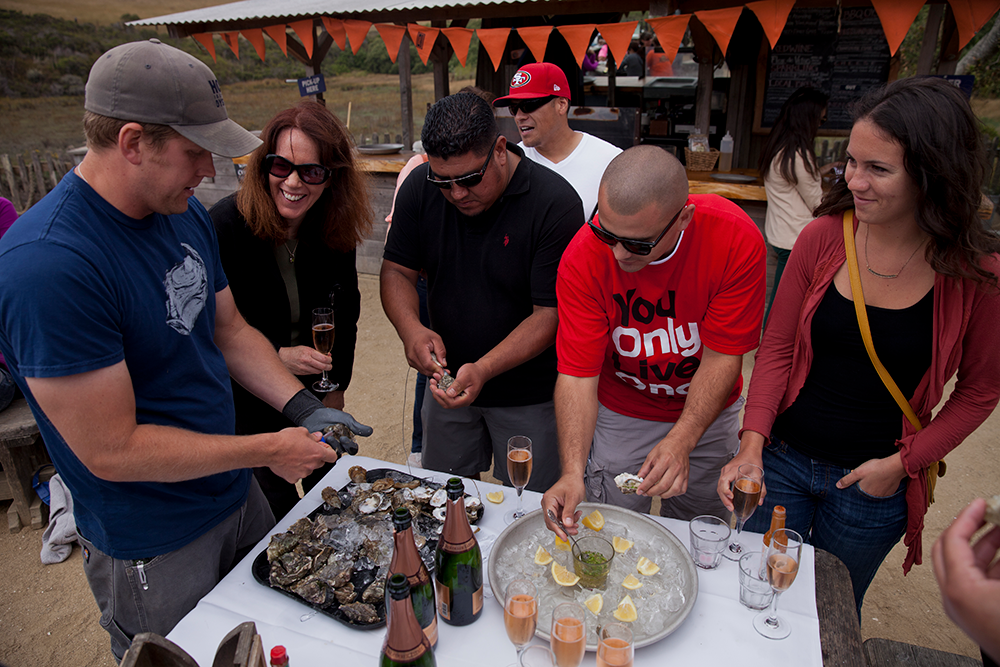5 More Years of Progress in Washington State
Published by Ocean Conservancy
Some of my favorite early summer evenings were spent on the Puget Sound with the Olympic Mountains in view and the salty smell of the ocean nearby. My friends and I would get together at the local marina to grab beers and a bag of oysters from the dockside shop. Then at the picnic tables we would take turns shucking oysters and sharing homemade sauces. Simple traditions like these define home for me. While we have long known that oysters and the rituals that accompany them are under threat from ocean acidification, I’m reassured to know that my home state of Washington continues to lead the search for adaptable solutions to defend our most treasured traditions.
Between 2005 and 2009, commercial Pacific Northwest hatcheries experienced disastrous oyster larvae die-offs that jeopardized local businesses and communities. In a forward-looking response, Washington State’s Marine Resources Advisory Council (MRAC) developed a comprehensive strategy for turning scientific knowledge into community action. In 2012, MRAC convened scientists, industry representatives, non-governmental organizations and state, local, federal and tribal policymakers in an advisory group known as the Washington State Blue Ribbon Panel on Ocean Acidification, which published recommendations to prepare for a changing environment. Just before Christmas, 5 years after the initial response, the panel shared an updated addendum to their action plan. The 2017 report shows clear progress and a reinforced commitment to protect Pacific Northwest livelihoods and traditions.
A focused 5-year investment in research of the local environment has strengthened Washington’s ability to effectively respond to the impacts of ocean acidification. The 2017 report highlighted new findings including:
- “Atmospheric CO2 in the Puget Sound area is increasing faster than along Washington’s coast and faster than the global average. Additionally, Southern Hood Canal shows the highest surface seawater values of pCO2 in Washington coastal waters.” (page 4)
- Human-generated atmospheric CO2 is a driving force of ocean acidification in surface waters around the Puget Sound.
- Several local species like Dungeness crab, pteropods, foraminifera and krill are showing sensitivity to ocean acidification, suggesting impacts across the marine food web including salmon and whales that feed on these smaller species.
- “Impacts may be more severe in nearshore coastal waters than in offshore open ocean waters, because corrosive conditions are closer to the surface in nearshore coastal waters and in Puget Sound.” (page 4)


In addition to the ongoing research, the report also shared significant organizational achievements in Washington since 2012 including:
- “Establishing a clean air rule to reduce carbon emissions from large in-state emitters.” (page 3)
- “Launching an ocean acidification conservation hatchery that serves as a hub for shellfish research and restoration.” (page 3)
- “Initiating enhanced and widescale monitoring–with real-time sharing through the Northwest Association of Networked Ocean Observing Systems (NANOOS)–to collect data and support shellfish hatchery adaptation practices.” (page 3)
- Increasing ocean acidification awareness and literacy through the creation of an ocean acidification K-12 curricula, outreach events and targeted advocacy with legislators.
Combating ocean acidification is not a simple task, but Washington State has spent the last 5 years collaborating with regional and international partners to gain on-the-ground insight and sound scientific understating of the ecosystem. Now that the state has invested the time and resources into becoming informed, leaders are better equipped to face the challenge head-on and begin taking action to protect the ocean that Pacific Northwest businesses, ocean life and community traditions depend on. As the state legislature reconvenes on January 8th, we are watching with interest to see how this influences this year’s Washington legislative agenda.
The post 5 More Years of Progress in Washington State appeared first on Ocean Conservancy.
Read the full article at: https://oceanconservancy.org/blog/2018/01/11/5-years-progress-washington-state/


